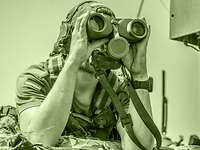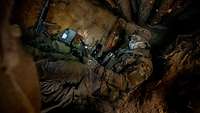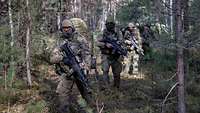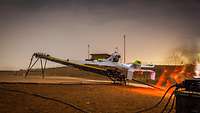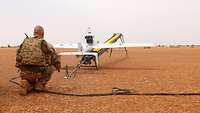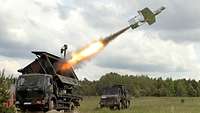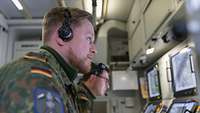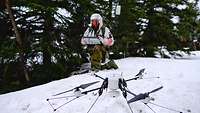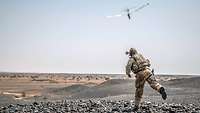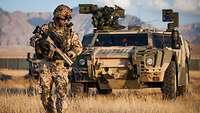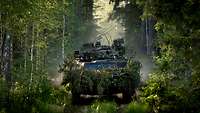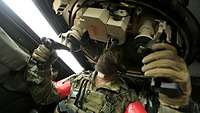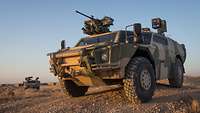The Intelligence, Surveillance and Reconnaissance, or ISRIntelligence, Surveillance and Reconnaissance, Corps is a branch of the Army. It is part of the combat service and command support forces and was activated on 6 March 2008 by the Chief of the Army. Its soldiers are referred to as reconnaissance troops or, colloquially, as scouts. They wear black berets and, in the tradition of the cavalry, golden-yellow braids and collar patches. Personnel assigned to the Division Schnelle Kräfte (DSKDivision Schnelle Kräfte), or Rapid Response Forces Division, wear a maroon beret. The cap badge shows two crossed lances. They are reminiscent of the branch’s cavalry origin.
The primary task of the branch is to conduct reconnaissance – in other words, to gather information about opposing forces (such as enemy soldiers) and the terrain. The ISRIntelligence, Surveillance and Reconnaissance Corps is the mainstay of Army reconnaissance and intelligence collection activities. It is part of the integrated intelligence collection and reconnaissance system of the armed forces.
Collecting information on crisis areas
Intelligence collection and reconnaissance is a joint task throughout the Bundeswehr. It is not limited to the Army and is fully effective only when different systems interact with one another in a system of systems. The result is a comprehensive, up-to-date situation picture. All forces engaged in intelligence collection and reconnaissance collect and capture situationally relevant information and intelligence around the world on areas of interest, crisis areas and areas of operation, and evaluate and disseminate the data to the user.
The ISRIntelligence, Surveillance and Reconnaissance Corps is the mainstay of Army reconnaissance. Its structure and procedures are designed to meet the commander’s information requirements in the field and to provide a comprehensive situation picture with as few gaps as possible. The ISRIntelligence, Surveillance and Reconnaissance Corps can also complement, consolidate, and verify reconnaissance results provided by other reconnaissance assets. In so doing, it also makes an important contribution to in-theatre force protection.
The branch is headed by the Director, ISRIntelligence, Surveillance and Reconnaissance Corps, who is also the Commandant of the Army ISRIntelligence, Surveillance and Reconnaissance Training Division at Munster. This is the central training facility of the ISRIntelligence, Surveillance and Reconnaissance Corps.
The ISRIntelligence, Surveillance and Reconnaissance Corps is equipped with a variety of different technologies and equipment. For instance, its soldiers use various types of vehicle, such as the Dingo all-protected carrier vehicle, the Fennek reconnaissance vehicle and the Fuchs armoured transport vehicle.
Unmanned aerial vehicles such as the ALADIN, KZOKleinfluggerät für Zielortung and LUNALuftgestützte unbemannte Nahaufklärungsausstattung reconnaissance systems are also available to ISRIntelligence, Surveillance and Reconnaissance Corps personnel.
